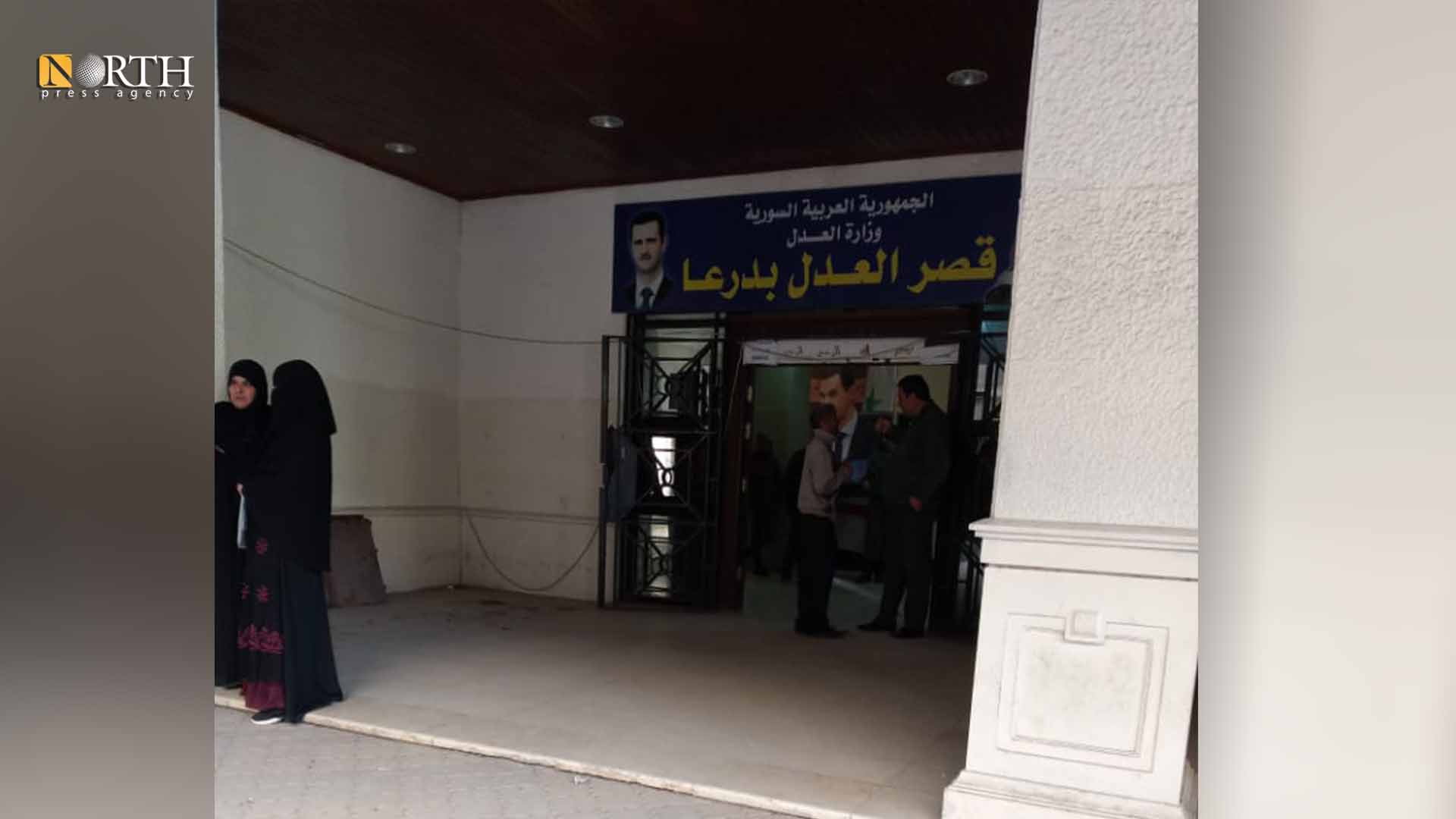DARAA, Syria (North Press) – Since a while, the family of Sohayb al-Qawarit residing in al-Hara town, in the western countryside of Daraa, south Syria, have been trying to either obtain the body of Sohayb or know the place where he was buried, but all their attempts failed.
Last week, the family of the detainee, who has been detained in the Syrian government prisons for four years, reviewed the personal status department to obtain some documents, but they were informed that their 46-year-old son, Sohayb al-Qawarit, had been died over a year ago.
In all the years of detention, the family of Sohayb did not manage to know where he was detained although they reviewed several government security branches.
Very recently, a number of detainees’ families of Daraa, were informed about the news of their sons’ death in the government prisons without being able to obtain their bodies or know the place where they were buried.
In December 2021, three families of Tasil town, in the western countryside of Daraa, received reports about the death of 4 sons of them who were detained in the government prisons.
The dead detainees, whom were declared dead, are the brothers Rami and Wasim al-Hayik, Tha’er al-Na’san and Abdullah al-Khatib.
Since the eruption of the Syrian war in 2011 until the first settlement process in 2018, the Martyrs Documentation Office, which is a local nongovernmental organization that follows up on the statistics of casualties and detainees in Daraa, has documented the killing of 1,239 detainees in the government prisons.
198 detainees were killed in the government prisons during the period extended between the first settlement and the second that ended on November of 2021, Muhammad al-Shar’, a member of the office, told North Press.
Eight of the detainees were killed in the period following the end of the second settlement until the end of 2021, according to al-Shar’.
“A very limited number of families obtain bodies of their detainees,” he added.
Dead body
Government security authorities handed over, in September of 2021, the body of the 26-year-old Younes al-Sabti, who had died in Sednaya Military Prison in Rif Dimashq, to his family after they received a phone call by the prison in order to review the prison to receive the body.
The family had been waiting for his release after paying massive amounts of money to government officers, a close source from al-Sabti family of the eastern countryside of Daraa said.
The government officer promised the family to release its son in September 2021, so that the mother distributed desert to her neighbors but “she did not know that she would receive the dead body of her son.”
Al-Sabti and his brother and a number of their relatives were detained although they were subjected to the first settlement process in the summer of 2018.
The first settlement process was held between Syrian opposition and the government forces under Russian auspice and stipulated not to pursue those who bear settlement card and returning the government employees to their jobs.
The Russian guarantor did not honor its commitments to stop the arbitrary arrest which in some cases caused the death of detainees under torture in the government prisons, according to local and international report.
Scandal for al-Assad “regime”
The government forces burnt and buried most of the detainees’ bodies, who lost their lives in prisons, in mass graves which is the reason after not delivering the bodies to their families, the oppositionist politician of Daraa, Ayman Abdullnour, told North Press.
The big number of detainees, who died in the government prisons, forces the government to periodically announce names of died detainees and hand deaths certificates to their families, according to Abdullnour.
For the sake of obtaining bodies of detainees, many families were deceived by the government officers through pretending that they could disclose fate of their sons to blackmailing them in turn for big amount of money, he noted.
The government does not really intend to reveal about the fate of the detainees in its prisons particularly those who were arrested during protests of 2011, according to residents and activists of Daraa.
Following the second settlement process in 2021, the government has freed some individuals, who have recently been arrested, while fate of other detainees has been kept ambiguous so far.
No accurate statistic on the number of detainees who lost their lives in detentions is available for any party, “due to the deploy of prisons in different areas in Syria in addition to having secret detentions that are not tied up to security branches,” he said.
Settlement did not work
As for the 38-year-old Umm Faysal, a resident of Lajat, when she reviewed Civil Registry Service in February 2020 in order to obtain a ration card, she knew that her husband had died.
Umm Faysal’s husband was a policeman in the Syrian Ministry of Interior before defecting in early 2012.
The husband joined the first settlement process and then he reviewed his former job site “where he was arrested, even the settlement did not work,” the wife said.
As a result of losing the breadwinners along with paying massive amounts of money in order to either disclose fate of or release detainees, families of those detained in the government prisons complain about the deteriorating livelihood conditions.
Umm Faysal had known nothing about her husband since October 2018. After that a released detainee told her that he saw him in a government security organ in Damascus.

